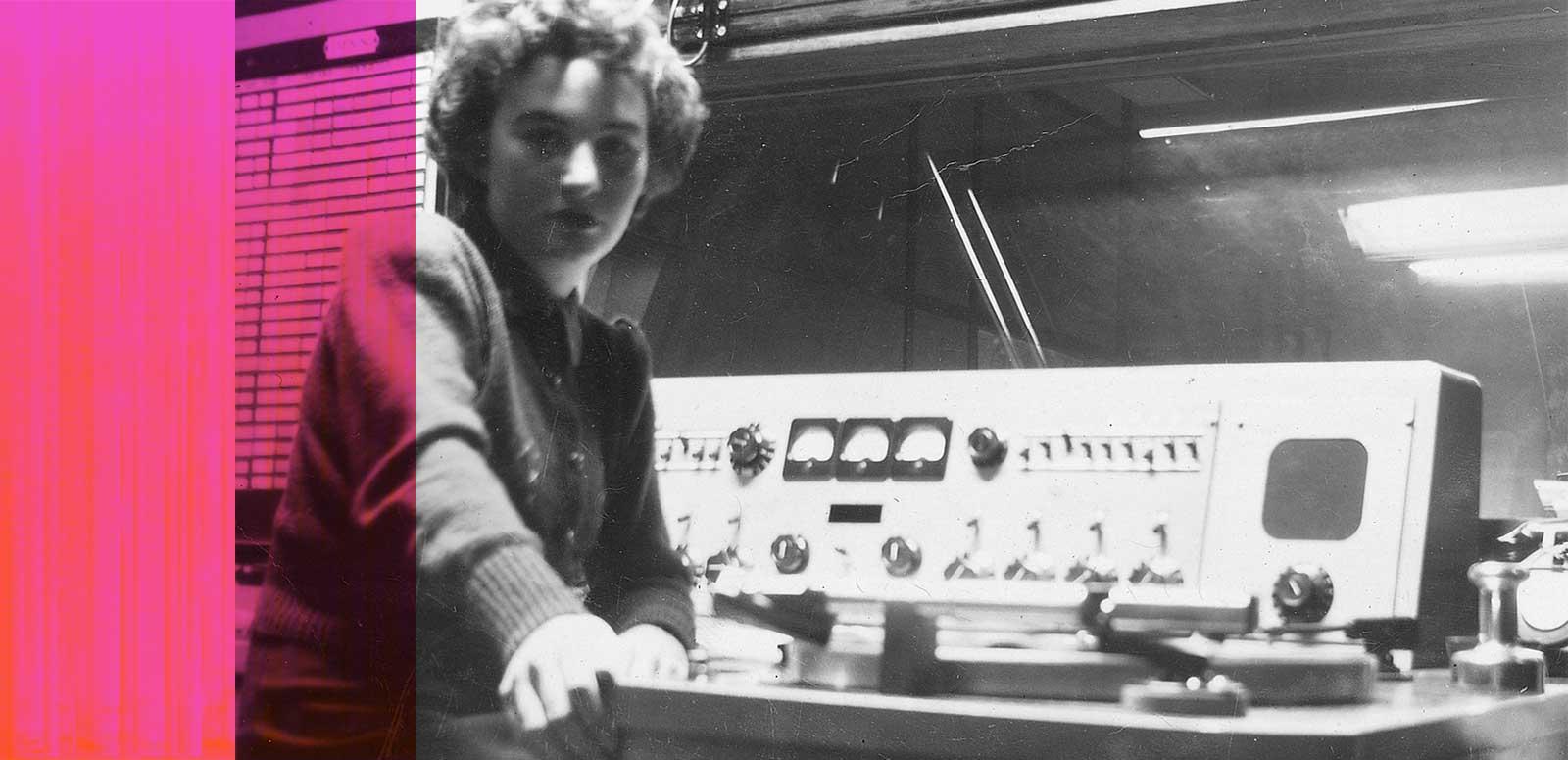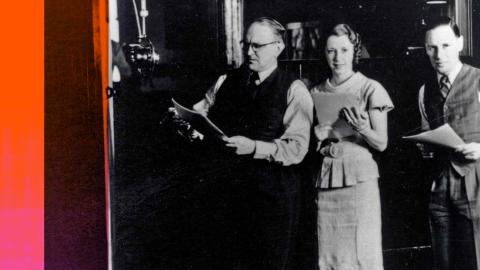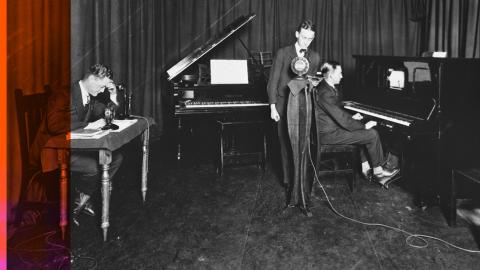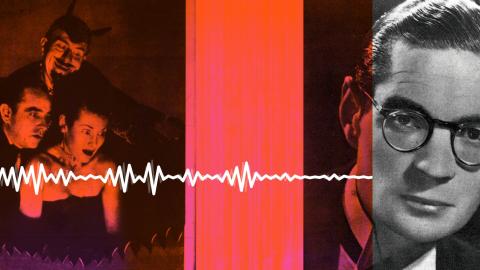

Golden Days: Radio's Meteoric Rise
Golden Days: The Rise of Radio from the 1920s to 1960s
Always on the Air
In the years after the first commercial broadcast, Australia embraced radio – fast. At first, it was an expensive novelty, either for keen experimenters with crystal sets, or people lucky enough to own a radio with large speakers that family and neighbours could gather around. But by 1937, not even 15 years later, two out of every three homes had a radio set. Performances, music and sporting events suddenly stopped being things you had to leave home to enjoy.
Sporting organisations in the 1930s were worried – worries that foreshadowed those of the film industry with the advent of television. Would people still pay to attend live events such as horseracing, cricket and boxing if they could hear them on the radio? In response, radio stations negotiated the broadcast rights to sporting events, which paved the way for the multi-million-dollar broadcast contract negotiations that now exist today.
Radio today is synonymous with news (especially the iconic Majestic Fanfare of ABC news bulletins) but that wasn’t always the case. Professor Bridget Griffen-Foley says the newspaper industry 'was somewhat anxious about radio, but it covered its bases by investing in the new medium'. There were some early examples of broadcast journalism in the 1930s: the Herald and Weekly Times Group allowed content from the papers to be discussed on air, and pioneering radio broadcaster Norman Banks delivered reports by recording to a fragile disc and shipping it to Australia. But it wasn’t until the 1940s that news on the radio took off and gave crucial updates throughout wartime. 2UW’s ‘Sydney Always on the Air’ was a 24-hour news, education and entertainment service broadcast from the top of the State Theatre. One segment features a report about the Australian Women's Army Service (AWAS) during the Second World War.
Cinesound Review 0288: Sydney Always on the Air in a Modern Radio Station, 1937. Courtesy: Cinesound Movietone Productions. NFSA title: 248130
'The girls took to mechanics like ducks to water – and that’s what she’s doing, testing the amphibious craft for leakages in the hull,' said the reporter. 'After the war, the male motorist won’t say ‘woman driver’ with such scorn and fear, for the girls get full marks for road courtesy, safety and common sense. The hand that rocks the cradle steers the wheel.'
As these reports depicted, the role of women was changing, and this was not only seen in the topics of the news but who was delivering it. By the 1950s and 60s, Australians were hearing female radio and TV pioneers such as Binny Lum talk to the biggest names in the world, including the Beatles, Barbra Streisand, Dame Joan Sutherland, Fred Astaire and more.
The Beatles interviewed by Binny Lum, London, 1964. Courtesy Sharon Terry and Geoff Charter. NFSA title: 1108342
A Certain Mystique
There were concerns the popularity of radio would not last, though – particularly with the arrival of television. But echoing the ways radio has evolved into modern podcasting, it didn’t disappear, it just changed. When heavy television sets started occupying the central position in the home’s communal gathering space, radio went smaller and portable. Enter the transistor. Legacy radio presenter, producer and programmer Lee Simon can remember carrying his around with him. 'I took the transistor radio to bed and had a flat battery by the following morning because it was on all night long', he says. 'Like many other kids growing up, regardless of what decade it was, radio had a certain mystique to it – a disembodied voice playing songs and talking about things that you ended up living, whether it was by buying the record, falling in love with a particular band, or going to a concert.'
Television, meanwhile, co-opted radio formats such as serials and quiz shows. Australia's Amateur Hour – a radio talent show that ran from 1940 to 1958 – is arguably the predecessor to shows like Young Talent Time, Australia’s Got Talent, The Voice and more (the NFSA holds approximately 60 episodes of Australia’s Amateur Hour out of the 925 that aired). Australia's Amateur Hour put a spotlight on First Nations performers and people from diverse cultural backgrounds and also featured appearances from Johnny O'Keefe, Jimmy Little, Frank Ifield and the duo Olive and Eva.
Host Terry Dear introduces Paula and Olga Perledo on Australia's Amateur Hour, 13 December 1958. NFSA title: 572979
Reflecting Culture
Meanwhile, decades before soaps like Neighbours and Home and Away were television mainstays, Australians tuned into serials such as Dad and Dave, Blue Hills and The Naked Vicar Show to hear the latest from their favourite characters. And it wasn’t just soaps – Australia had their homegrown version of Superman on 2GB, and, back in the 1930s to 50s, there were crime, horror, fantasy and supernatural radio plays and serials that were as popular as they were controversial; forerunners of the true crime podcasts binged today.
Dad and Dave from Snake Gully featuring the George Edwards Players, 1937. NFSA title: 737158
Radio was an early means for Australians to hear our culture reflected back to us and to feel a part of an evolving national identity. It’s a feeling that would become only more prevalent in the years to come as stations grew, audiences fractured, smaller communities and fanbases were established, and radio continued to grow alongside us.
Caris Bizzaca is a journalist, writer, and emerging screenwriter working on unceded Gadigal Land in Sydney. She is completing a Master of Arts in Creative Writing at UTS.
Main image: Nina Valentine in the 3BA Melbourne studio. March 1945. NFSA title: 1497838
The National Film and Sound Archive of Australia acknowledges Australia’s Aboriginal and Torres Strait Islander peoples as the Traditional Custodians of the land on which we work and live and gives respect to their Elders both past and present.


